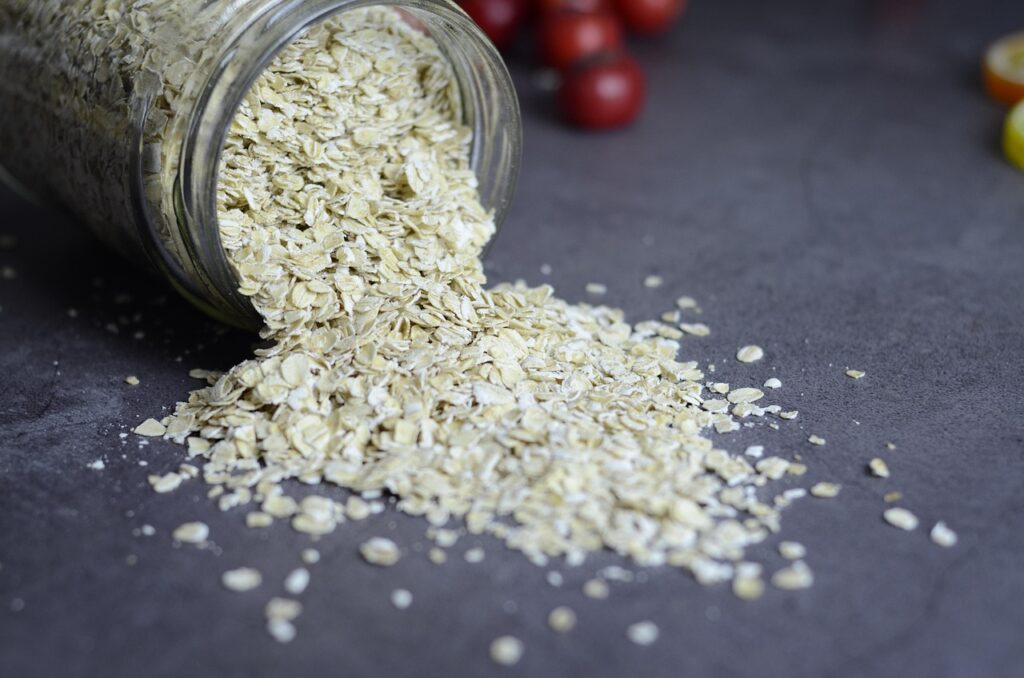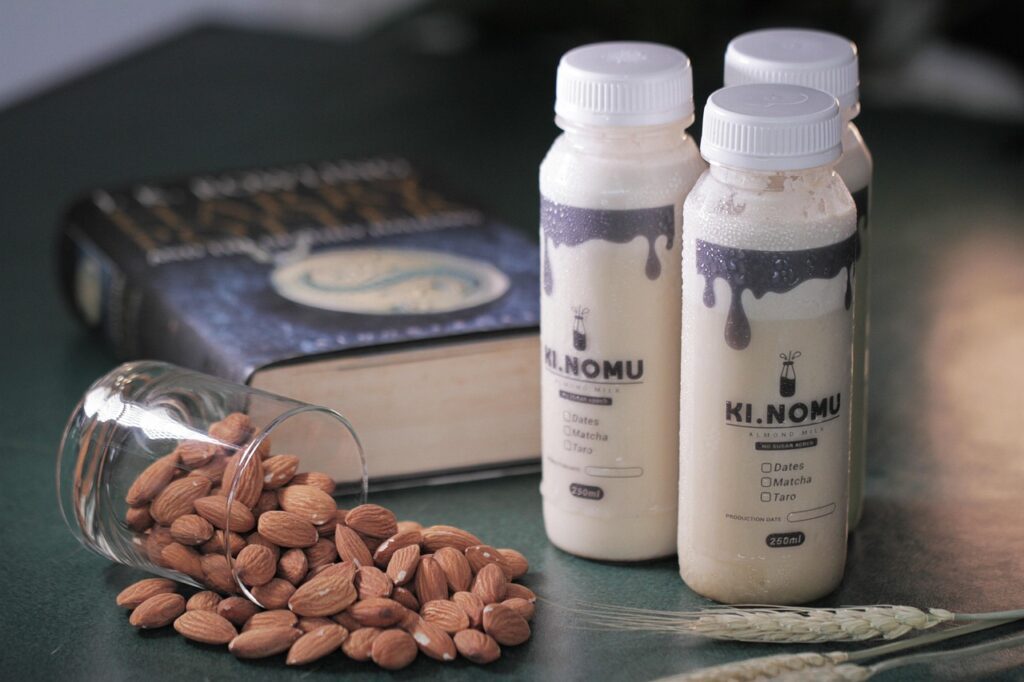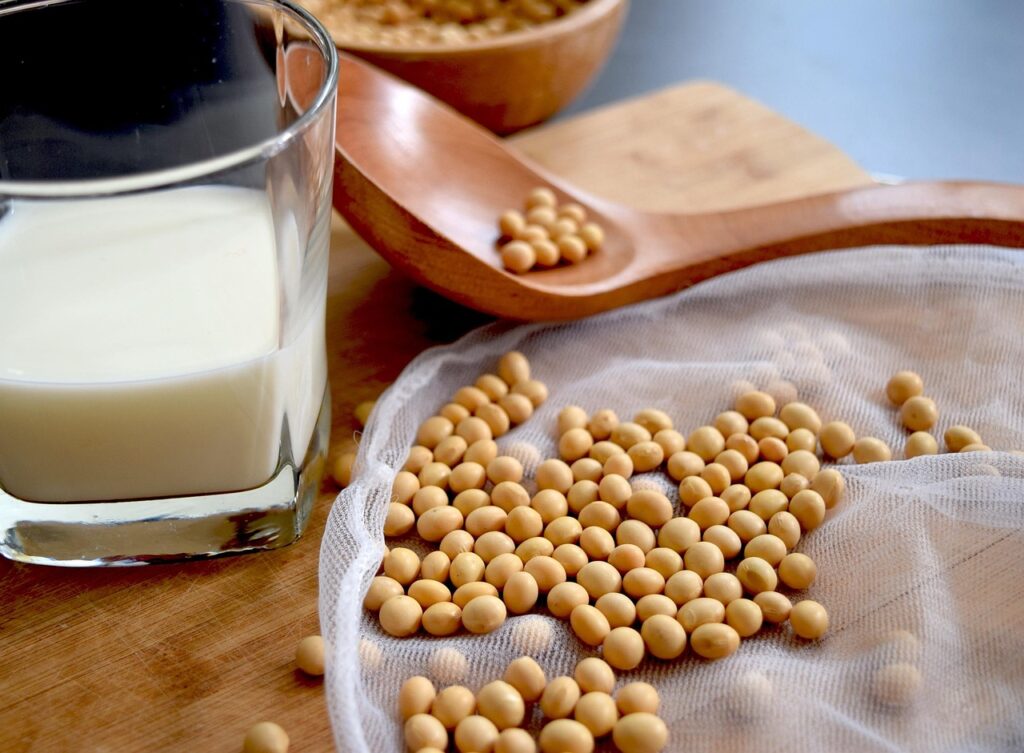The Great Dairy Exodus
At some point, milk became the bad guy. It was blamed for acne, bloating, mucus, and inflammation. Then came the plant-based movement. Oat milk, almond milk, soy milk — all marketed as cleaner and healthier.
But did we really upgrade, or did we just swap something natural for something processed? Most people think they’ve made a better choice, but what’s hiding behind the plant-based label tells a very different story.
Oat Milk: The Blood Sugar Bomb in a Coffee Cup

Oat milk has become the face of modern “health” culture. It’s everywhere, from coffee shops to influencer fridges. But the reality is that oat milk is mostly sugar water.
The processing turns oat starch into maltose, a simple sugar with a glycemic index higher than pure glucose. That means it spikes your blood sugar even faster than soda. A study published in Food Research International (Deeth, 2017) found that oat-based beverages trigger glucose and insulin spikes similar to high-glycemic carbs.
Most brands also add canola or sunflower oil for texture, introducing large amounts of omega-6 fats that fuel inflammation when not balanced by omega-3s. And since oats are one of the most heavily sprayed crops in modern agriculture, many oat milks contain residues of glyphosate — a herbicide shown in Environmental Health (Mesnage et al., 2022) to damage gut bacteria and increase intestinal permeability.
That “clean” oat milk latte might taste great, but metabolically, it’s a sugar spike in disguise.
Almond Milk: Mostly Water, Plus Additives

Almond milk sounds pure and natural, but most commercial cartons contain about two percent almonds. The rest is water, thickening agents, synthetic vitamins, and gums.
Carrageenan and gellan gum are often added to make the texture creamy. In animal studies, carrageenan has been linked to intestinal inflammation and disruption of the gut barrier (Tobacman, 2001, Environmental Health Perspectives). Many brands also add vitamin D2 instead of D3 and calcium carbonate instead of the highly absorbable calcium found in dairy. Your body doesn’t process these synthetic nutrients the same way.
Then there’s the environmental impact. It takes over a gallon of water to grow a single almond, and most of those almonds are grown in drought-prone California. The marketing looks sustainable, but the data tells another story.
Soy Milk: Hormone Chaos in a Carton

Soy milk has been around longer than the newer plant milks, and it’s often marketed as a protein-rich, heart-healthy alternative. But soy contains isoflavones, compounds that mimic estrogen.
In small amounts, they may be harmless, but high and consistent intake can alter hormone balance. A review in Fertility and Sterility (Messina et al., 2010) found that frequent soy consumption can influence reproductive hormones in both men and women.
Most soy milk is also made from genetically modified soybeans processed with hexane, a petroleum-based solvent. After that, it’s bleached, heated, and fortified with synthetic nutrients to make it seem nutritious again. It looks like milk but acts nothing like it in your body.
If you’re trying to reduce hormonal disruption and processed food, soy milk misses the mark completely.
Processing Changed Everything
This is the heart of the problem. It’s not just that these milks come from plants. It’s how much they’ve been altered to resemble milk.
Food technology took something simple — oats, almonds, soy — and turned it into an industrial emulsion. These drinks are missing the natural complexity of real milk. They don’t contain vitamin K2, CLA, bioavailable calcium, or saturated fats that support hormone production and bone health (Cordain, 2011, American Journal of Clinical Nutrition).
You can mimic the taste and texture, but not the biological intelligence of a food that humans have consumed for thousands of years. When we trade real food for engineered substitutes, the cost always shows up somewhere else — in our metabolism, our hormones, or our energy.
The Case for Real Dairy

If you can tolerate dairy, it remains one of the most nutrient-dense foods on the planet. Grass-fed, full-fat milk offers:
Vitamin K2, which directs calcium into bones instead of arteries
CLA, a fatty acid that supports metabolism and reduces inflammation
True calcium and phosphorus, which help maintain strong bones and healthy nerve function
Saturated fats, which serve as the foundation for hormone production
For those who struggle with lactose, raw milk or fermented dairy like kefir and yogurt are often well tolerated. The natural bacteria pre-digest much of the lactose, making it easier on your system.
Humans evolved with ruminant animals for a reason. Real milk is a complete food that’s been part of our biology since the beginning.
If You’re Going Dairy-Free, Do It Right
If dairy doesn’t sit well with you, that’s fine. But replacing it with processed plant emulsions isn’t the answer. Choose simple, single-ingredient options made from organic nuts, coconuts, or seeds. Even better, make your own at home. It takes minutes and gives you full control over what’s going into your body.
If you go dairy-free, make sure you replace the nutrients you’re losing. Bone broth provides calcium, organ meats supply fat-soluble vitamins, and pastured egg yolks are rich in choline. When you eat real, whole foods, you’re still supporting the same biological pathways that milk once did — just without the carton.
The Bottom Line
Most people ditch dairy because they want to feel better. But the irony is that many of the “healthy” plant milks create the same problems dairy supposedly caused. They spike blood sugar, feed inflammation, and introduce synthetic additives your body doesn’t recognize.
Plant-based doesn’t automatically mean better. Food made in a factory will never compare to food made by nature.
If you want to improve your health, start looking past the labels and marketing claims. Real nourishment doesn’t come from processed convenience. It comes from foods your biology actually understands.
Your body doesn’t need another product. It needs something real.
Sources
- Mesnage, R., et al. (2022). Toxicological evaluation of glyphosate herbicide exposure and its effects on the human microbiome. Environmental Health, 21(1), 84.
- Tobacman, J. K. (2001). Review of harmful gastrointestinal effects of carrageenan in animal experiments. Environmental Health Perspectives, 109(10), 983–994.
- Messina, M., et al. (2010). Soy intake and reproductive health: A review. Fertility and Sterility, 94(3), 725–731.
- Deeth, H. C. (2017). Plant-based milk substitutes: Composition, nutrition, and health implications. Food Research International, 99, 365–371.
- Cordain, L. (2011). The Paleo Diet: Implications for Dairy Consumption. American Journal of Clinical Nutrition, 94(5), 1465–1470.

Leave a Reply